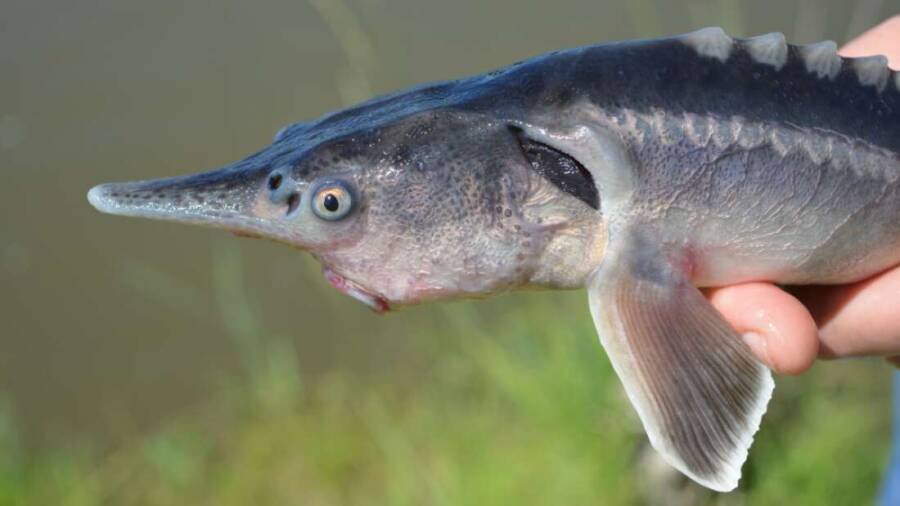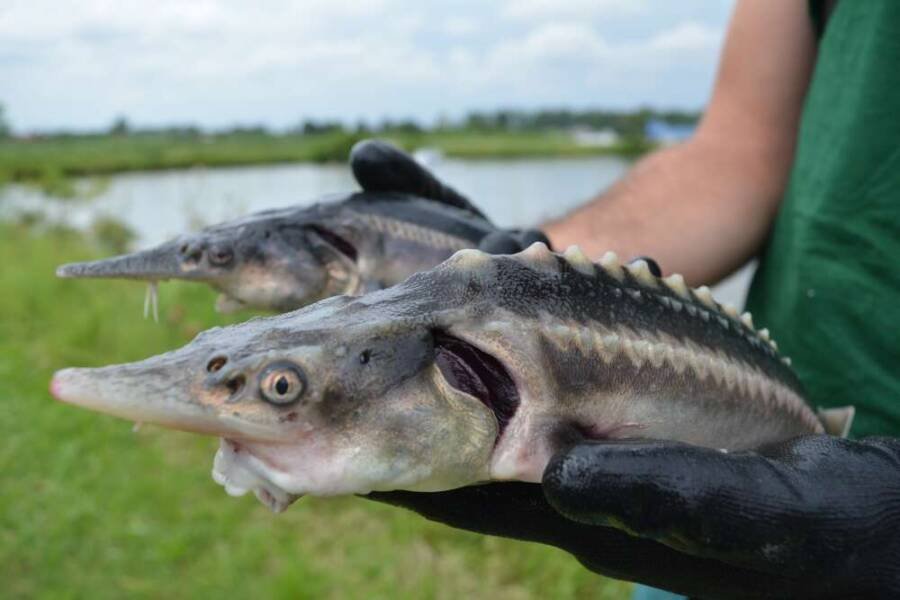Scientists from Hungary have done the “impossible” and bred Russian sturgeon and American paddlefish and the result is a bizarre-looking hybrid.

With the help of Hungarian scientists, the seemingly impossible just occurred – the hybrid resulted in the birth of long-nosed, spiky-finned hybrids of Russian Sturgeons and American paddlefish. Though the results were unintentional, about 100 of these so-called “sturddlefish” are now in captivity, but scientists have no plans to create more.
According to LiveScience, the research institute for Fisheries and Aquaculture in Hungary scientists didn’t plan to birth this entirely new species. After all, 184 million years of evolution on separate continents made it seem clear that surgeons and paddlefish were sexually incompatible.
“We never wanted to play around with hybridization. It was absolutely unintentional,” a senior research fellow at the institute.
After placing sperm from an American paddlefish near eggs from a Russian sturgeon, the eggs reproduced asexually through gynogesis, it is a system of asexual production that requires the presence of sperm without the actual contribution of its DNA for completion.

The findings reveal utter shock at DNA being transferred at all. These endangered fish species now have an addition to the family, despite the intentions of those overseeing the experiment.
The goal was to check whether introducing asexual reproduction into these fish species could help protect their population numbers, which are plummeting in the face of overfishing, pollution, and habitat loss.
Hybridization is not really encouraged in science as with the previous attempts to hybridize had catastrophic results. These two species share some physical traits, the result was rather surprising.
The hybrids are made up of the gametes of seven individual fish and exhibit various ratios of features from both species. The offsprings partly resemble their fathers and some with their mothers.
“I did a double-take when I saw it, I just didn’t believe it. I thought, hybridization between sturgeon and paddlefish? There’s no way?” Solomon Davis, an aquatic ecologist at Nicholls State University in Louisiana told The New York Times.
Russian sturgeons are critically endangered and also economically important, they are the source of much of the world’s caviar. Sturgeons can grow to more than 7 feet (2.13 m) long. American paddlefish grow up to 8.5 feet (2.59 m) long and have a slow rate of growth and developments like the sturgeon.
Both the paddlefish and sturgeon are among the largest and longest fish species in existence. When dinosaurs roamed across the American continent, that was the last time they shared common ancestors.
Russian sturgeons don’t have any presence in the United States, not even as an introduced species. Sturgeons typically inhabit the riverbeds, seafloor, and lakes in Eastern Europe and the Middle East. Meanwhile, American paddlefish use their long snouts to gig for food in America rivers.
“These phenomena could lead to a higher similarity, compatibility, and flexibility among the sturgeon genomes and allow the hybridization between Russian sturgeon and American paddlefish despite the large geographical, physiological, and morphological distances,” the study argued.

These have been many failed efforts of hybridization between similarly distant families of animals. The new sturddlefish individuals are in captivity and have survival rates beyond 30 days that range from 62 to 74 percent.
The researchers said that there’s currently no intention of creating any more sturddlefish. Nonetheless, continuing to study how the two species that birthed them reproduce is certainly on the docket with a focus on finding out how best to protect them from extinction.
The International Union for the Conservation of nature confirmed earlier this year that sturgeon are “more critically endangered than any other group of species”










